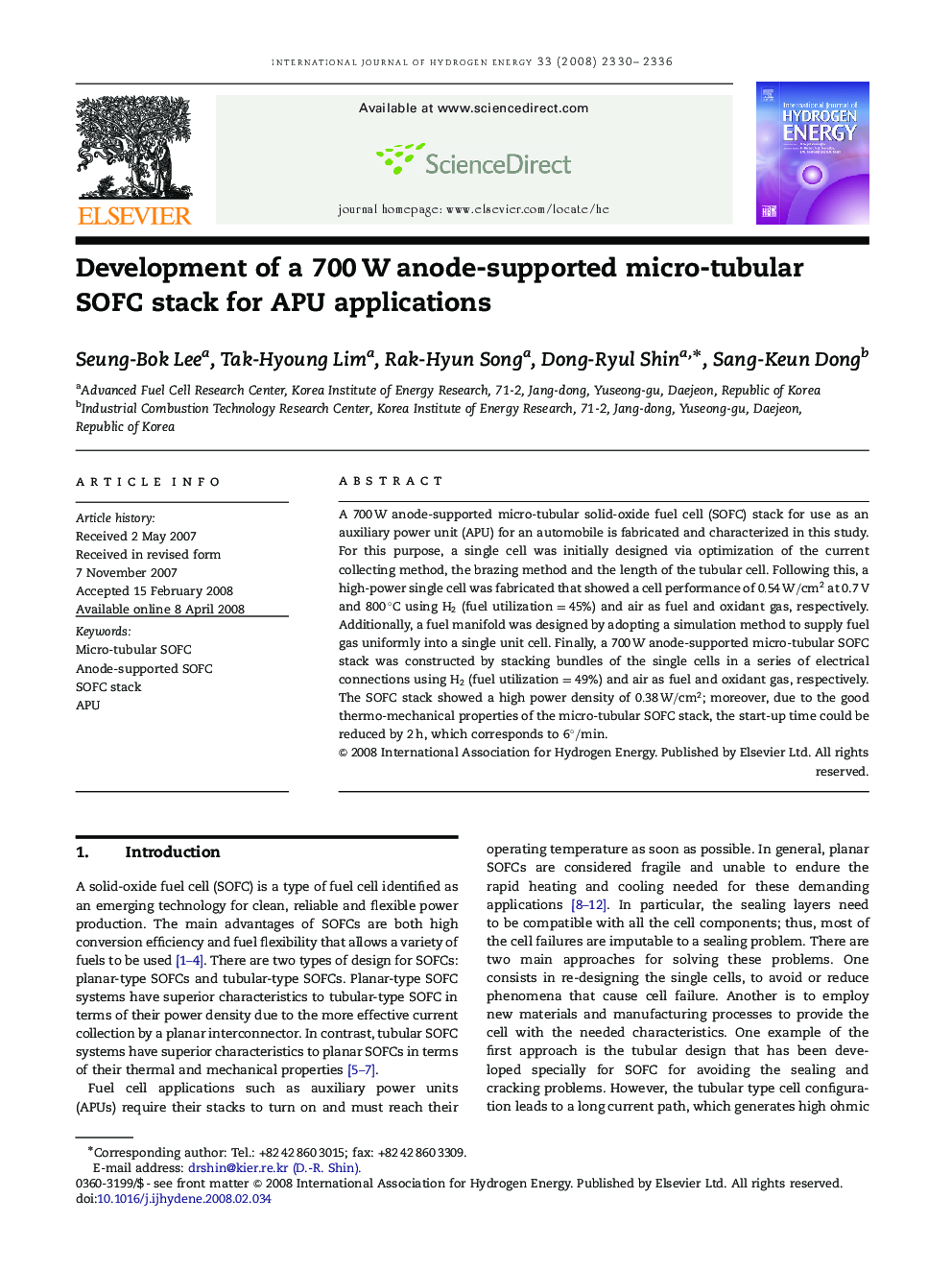| Article ID | Journal | Published Year | Pages | File Type |
|---|---|---|---|---|
| 1281642 | International Journal of Hydrogen Energy | 2008 | 7 Pages |
A 700 W anode-supported micro-tubular solid-oxide fuel cell (SOFC) stack for use as an auxiliary power unit (APU) for an automobile is fabricated and characterized in this study. For this purpose, a single cell was initially designed via optimization of the current collecting method, the brazing method and the length of the tubular cell. Following this, a high-power single cell was fabricated that showed a cell performance of 0.54W/cm2 at 0.7 V and 800∘C using H2H2 (fuel utilization=45%utilization=45%) and air as fuel and oxidant gas, respectively. Additionally, a fuel manifold was designed by adopting a simulation method to supply fuel gas uniformly into a single unit cell. Finally, a 700 W anode-supported micro-tubular SOFC stack was constructed by stacking bundles of the single cells in a series of electrical connections using H2H2 (fuel utilization=49%utilization=49%) and air as fuel and oxidant gas, respectively. The SOFC stack showed a high power density of 0.38W/cm2; moreover, due to the good thermo-mechanical properties of the micro-tubular SOFC stack, the start-up time could be reduced by 2 h, which corresponds to 6∘/min6∘/min.
